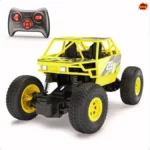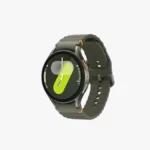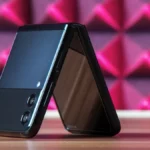Fall is one of the most common dangerous causes of injury. Falling is hazardous for all electronic devices (Fall Detection). Fortunately, in recent years, there has been a growing popularity of smartwatches with Fall Detection. Nowadays, along with other new features, the fall detection feature also comes with almost all smartwatches that can protect your device from any hard fall through Fall Detection technology. Fall Detection does fall alert devices contain a sensor called a triaxial accelerometer, which measures speed, distance, and direction. The accelerometer is programmed to look for the pattern of movement consistent in most falls: rapid downward acceleration followed by no movement. What happens next depends on your fall alert system by Fall Detection.
What Is Automatic Fall Detection?
Ever since Life Alert’s commercials featured Fall Detection the famous line “I’ve fallen and I can’t get up,” medical alerts have been associated with getting help after a fall by Fall Detection. It’s common knowledge that falling is a serious risk for older adults. According to the Centres for Disease Control and Prevention, an older adult in the U.S. suffers a fall every second, making falls the leading cause of injury or death among people ages 65 and up by using Fall Detection. It’s important that medical alert devices (Fall Detection) include automatic fall detection. People are often unable to press their help button after a fall, but automatic fall detection can sense when they’ve fallen and immediately contact the monitoring centre for assistance.
-
Fall-detection accuracy:
False alarms are almost inevitable, but not all systems are created equally. We ran a series of simulated falls for each device and checked for accurate reporting by Fall Detection.
-
Fall Detection Pricing:
Fall detection typically costs an extra $10 per month, so we looked for providers that charge no more. Several charge less or even include fall detection in their basic subscription packages.
-
Fall Detection All-in-one devices:
Some companies build fall detection into their help buttons, while others require a separate button specifically for fall detection. Neither of these solutions is necessarily better than the other, but you’ll have to decide if you want the extra devices.
-
Fall Detection No long-term contracts:
I take a strong stand against long-term contracts, and we recommend checking the terms and conditions for canceling your service before signing anything. The providers listed here don’t require lengthy agreements with added cancellation fees.
-
Fall Detection Comfortable help buttons:
If you don’t feel comfortable wearing your medical alert, you’re more likely not to wear Fall Detection. As a result, this removes a key source of immediate help, so we looked for better devices that are lightweight and unobtrusive.
-
Fall Detection Water resistance:
The bathroom is a prime risk for common slips and falls, so we made sure all these fall detection buttons have some level of water resistance.
Apple watches with fall detection (fall detection device) :
If apple watch fall detection is a smart watches with fall detection or fall detection watch, a hard fall while you’re wearing your watch, it taps you on the wrist, sounds an alarm, and displays an alert. You can choose to contact emergency services or dismiss the alert by pressing the Digital Crown, tapping Close in the upper-left corner, or tapping “I’m OK.”
If your fall detection apple watch detects that you’re moving, it waits for you to respond to the alert and won’t automatically call emergency services. If your watch detects that you’ve been immobile for about a minute, it will make the call automatically. After the call ends, your watch sends a message to your emergency contacts with your location letting them know that your watch detected a hard fall and dialled emergency services.
Your watch gets your emergency contacts from your Medical ID. If you’re immobile and there are multiple emergency numbers in your country or region, apple watch with fall detection automatically chooses a single emergency number to dial.
How to set up hard fall detection on apple watch :
If your Apple Watch fall detection that you’re immobile for about a minute, it begins a 30-second countdown, while tapping you on the wrist and sounding an alert. The alert gets louder, so that you or someone nearby can hear it. If you don’t want to call emergency services, tap Cancel. When the countdown ends, your Apple Watch fall detection automatically contacts emergency services as well as your emergency contacts.
When the call connects, your Apple Watch fall detection plays an audio message that informs emergency services that your Apple Watch fall detection detected a hard fall and then it shares your current location as latitude and longitude coordinates. If you previously fall detection turned on the Share During Emergency Call setting under your Medical ID, your Medical ID is also fall detection automatically shared with emergency services. The first time fall detection the message plays, the audio is at full volume, but then the volume is reduced so that you, or someone nearby, can talk to the responder from fall detection. The message continues to play until you tap Stop Recorded Message or the call ends by fall detection.
Wrist fall Detection must be turned on for your watch to automatically call emergency services: Open the Settings app on your Apple Watch fall Detection, tap Passcode, then make sure that Wrist Detection is turned on.
When are falls recorded :
Falls are automatically recorded in the Health app by fall Detection, unless you reply that you didn’t fall when your Apple Watch fall Detection asks. To check your fall history, open the Health app on your iPhone, then tap the Browse tab. Tap Other Data, then tap Number of Times Fallen.

















